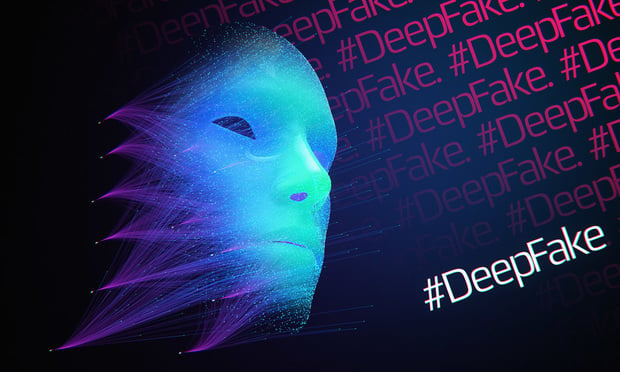Features

A Business Guide to the U.S. AI-Privacy Crossroads
As AI becomes more embedded in everyday life and business operations, companies are facing a growing regulatory maze at the intersection of state privacy laws and emerging AI standards. This article explores the privacy laws that impact the use of AI and automated decision making and offers a practical guide for business leaders that aligns AI innovation with privacy expectations.
Features

Smarter Paths to Generative AI In Law Firms
Stop running pilot after pilot with different tools but failing to move beyond testing. Start with business outcomes. Redesign processes and guardrails. Rethink pricing models. And then, with clarity of purpose, choose the tools that enable the future of legal work.
Features

AI Against Counterfeits
As AI becomes more sophisticated at detecting fakes, it is not just changing how brands protect themselves — it has the potential to change the legal framework for determining when platforms themselves might be held responsible for the counterfeits sold on their sites.
Features

Hidden Details of AI Training Data Set Creates Dilemma for Copyright Holders’ Infringement Claims
How are copyright holders to prove their works were used to train AI models if the details about the vast data sets used for such training are kept secret? That’s a dilemma that surfaced in late August when a federal judge dismissed a claim of direct infringement raised by a group of authors.
Features

AI Against Counterfeits: How Smart Technology Is Reshaping Brand Protection and Platform Accountability
As AI becomes more sophisticated at detecting fakes, it is not just changing how brands protect themselves — it has the potential to change the legal framework for determining when platforms themselves might be held responsible for the counterfeits sold on their sites.
Features

Beyond Pilots: Smarter Paths to Generative AI in Law Firms
Stop running pilot after pilot with different tools but failing to move beyond testing. Start with business outcomes. Redesign processes and guardrails. Rethink pricing models. And then, with clarity of purpose, choose the tools that enable the future of legal work.
Features

Discovery Block In Authors’ Direct Infringement Claim Against Mosaic AI Program
How are copyright holders to prove their works were used to train AI models if the details about the vast data sets used for such training are kept secret? That dilemma surfaced when a California federal judge recently dismissed a claim of direct infringement raised by a group of authors.
Features

AI In Commercial Construction Contracts
Artificial Intelligence (AI) is permeating every phase of construction — redefining how buildings and projects are designed, managed, and maintained. This article offers practical analysis, sample clauses, and insights into how AI-specific contract terms can mitigate risk and facilitate responsible innovation.
Features

AI and the Fair Use Defense: Lessons from Two Recent Summary Judgment Rulings
Two judges in the Northern District of California recently issued groundbreaking summary judgment rulings regarding whether an artificial intelligence company’s scraping and ingestion of copyrighted works to train its LLMs qualified as fair use. Both decisions carry potentially seismic importance for AI companies and intellectual property litigators.
Features

How AI Is Transforming the Buyer Journey: The End of Google, Part One
The end of Google page one is not the end of discovery. It is the beginning of a new discovery model — one where the winners are those who align with how buyers actually search, learn, and decide in the age of AI.
Need Help?
- Prefer an IP authenticated environment? Request a transition or call 800-756-8993.
- Need other assistance? email Customer Service or call 1-877-256-2472.
MOST POPULAR STORIES
- Law Firms are Reducing Redundant Real Estate by Bringing Support Services Back to the OfficeA trend analysis of the benefits and challenges of bringing back administrative, word processing and billing services to law offices.Read More ›
- Disconnect Between In-House and Outside Counsel'Disconnect Between In-House and Outside Counsel is a continuation of the discussion of client expectations and the disconnect that often occurs. And although the outside attorneys should be pursuing how inside-counsel actually think, inside counsel should make an effort to impart this information without waiting to be asked.Read More ›
- Divorce Lawyers' Obligation to ChildrenDo divorce lawyers have an obligation to disclose client confidences when it is in the best interests of the client's child to do so? The short answer of the rules of professional responsibility is 'no' because a 'yes' answer is deemed to be fundamentally inconsistent with the premises of the adversary system in which the divorce lawyer functions. The longer answer is that the rules encourage ' but do not require ' a divorce lawyer to counsel the client to authorize the disclosure because it is in the best interests of both parent and child.Read More ›
- Upping the Legal Training AnteWomble Carlyle's technology training and online learning programs were in need of an upgrade. Unprecedented firm growth, heightened emphasis on developing lawyers' core technology competencies, and a need to streamline and automate existing e-learning processes led the firm to initiate a fundamental shift.Read More ›
